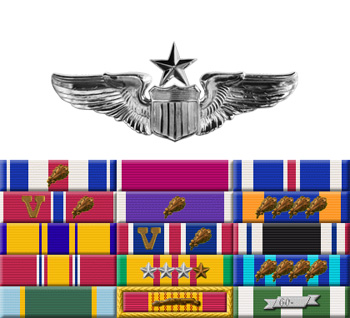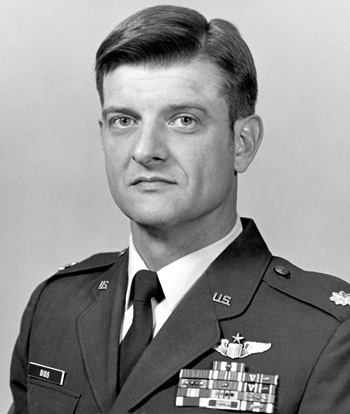
|
Robert I. Biss |
 |
|||
| Rank, Service | ||||
Lieutenant Colonel O-5, U.S. Air Force |
||||
| Veteran of: | ||||
|
||||
| Tribute: | ||||
Bob Biss was born in 1939 in Johnstown, Pennsylvania. He enlisted in the Aviation Cadet Program of the U.S. Air Force for Navigator Training on March 6, 1959, and was commissioned a 2d Lt and awarded his navigator wings at Harlingen AFB, Texas, on March 4, 1960. Lt Biss next completed Radar Intercept Officer training at James Connally AFB, Texas, in October 1960, followed by service as an F-101B Voodoo Radar Intercept Officer with the 75th Fighter-Interceptor Squadron at Dow AFB, Maine, from November 1960 to June 1963. He then completed Undergraduate Pilot Training and was awarded his pilot wings at Williams AFB, Arizona, in June 1964, and then attended F-4 Phantom II Combat Crew Training from August 1964 to January 1965. Capt Biss served as an F-4 pilot with the 431st Tactical Fighter Squadron at George AFB, California, from January 1965 to November 1966, and during this time he deployed to Southeast Asia in September and October 1965, and again from August 1966 until he was forced to eject over North Vietnam and was taken as a Prisoner of War on November 11, 1966. After spending 2,306 days in captivity, Maj Biss was released during Operation Homecoming on March 4, 1973. He was briefly hospitalized to recover from his injuries at Westover AFB, Massachusetts, and then attended Air Command and Staff College at Maxwell AFB, Alabama, from August 1973 to June 1974, followed by an Air Force Institute of Technology assignment to complete his bachelor's degree from June 1974 to June 1976. Col Biss' final assignment was as a C-141 Starlifter pilot with the 30th Military Airlift Squadron at McGuire AFB, New Jersey, from June 1976 until his retirement from the Air Force on April 1, 1979. |
||||
|
||||

